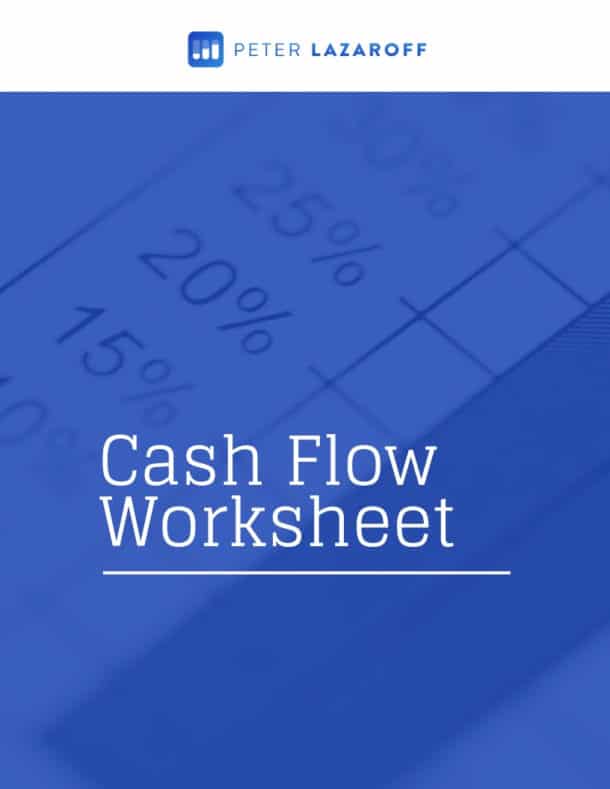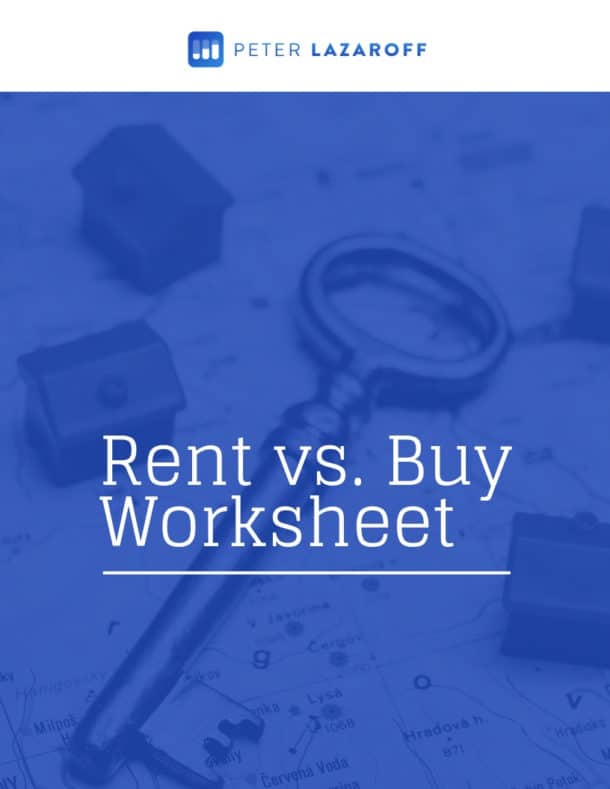Listen Now
The biggest financial mistakes don’t usually happen all at once. They creep in slowly—through small, seemingly harmless decisions made without considering the bigger picture. It’s not the one-time splurge or a single bad investment that derails a financial plan; it’s the compounding effect of missed opportunities and avoidable missteps.
This is where tax projections come in. They act like a wide-angle lens for your finances, showing how today’s decisions ripple through tomorrow’s outcomes. When done right, they help you spot opportunities to save, avoid costly surprises, and make smarter choices that align with your long-term goals.
But here’s the thing: most people don’t take advantage of this tool. They think of taxes as something to deal with in April—a chore rather than a strategy. And that mindset can cost them.
If you’re looking for a financial advisor who doesn’t just focus on investments but also provides comprehensive tax advice—including proactive tax projections—and even has their own tax practice to file returns, visit www.callwithpeter.com. Plancorp is a true one-stop shop that goes well beyond basic financial advice, bringing your wealth into alignment with your values and goals.
Now…Grab your latest paystubs, and let’s get started with the basics of a tax projection.
Sign up for my newsletter so you can easily reply to my emails with your thoughts or questions for the podcast:
What Are Tax Projections?
Let’s start with the basics: What is a tax projection?
At its core, a tax projection is a forward-looking estimate of your tax liability. It takes into account your current income, deductions, credits, and investments, along with any expected changes in the future.
Some people will refer to it as a financial crystal ball—which I guess is fine—it’s not perfectly precise, but it’s accurate enough to give you a clear sense of what’s coming.
The process begins by gathering key pieces of personal financial information, starting with your paystubs. These show your year-to-date income, tax withholdings, and contributions to retirement accounts like a 401(k) or HSA. From there, they’ll factor in other sources of income—such as investment dividends, rental income, or Social Security benefits—and deductions like mortgage interest, charitable donations, or healthcare expenses.
Next, your financial professional models your tax situation using specialized software. This software incorporates federal and state tax laws, applying the appropriate tax brackets, credits, and rules to calculate your projected liability. For example, they might adjust for bonuses, stock options, or any planned large transactions, like selling an investment or withdrawing from a retirement account.
This step-by-step process isn’t just about crunching numbers—it’s about creating a clear roadmap. A tax projection lets you see how your actions today—like exercising stock options or doing a partial Roth conversion—will impact your tax bill tomorrow. It shows how these decisions could affect your taxable income, potentially push you into a different tax bracket, or unlock opportunities for long-term savings. And, perhaps most importantly, it eliminates surprises.
Why does this matter? Because taxes don’t exist in a vacuum. Every financial decision you make—whether it’s investing in a new asset, withdrawing money in retirement, or rebalancing your portfolio—has tax consequences.
Tax projections allow you to see those consequences before they happen, giving you the power to adjust your strategy and make more informed decisions.
Real-Life Examples of Tax Projections in Action
Let’s make this tangible with a couple of real-life scenarios.
Example 1: Deciding When to Withdraw from Retirement Accounts
Imagine you’re nearing retirement and have both a traditional IRA and a Roth IRA. You know withdrawals from a traditional IRA are taxed as ordinary income, while Roth withdrawals are tax-free.
So, which account do you tap first?
A tax projection can show you the impact of different withdrawal strategies. For instance, if you’re in a lower tax bracket early in retirement, it might make sense to draw from your traditional IRA first, delaying Roth withdrawals until your income—and tax bracket—rises.
This strategy, called tax bracket management, helps you minimize lifetime taxes and keep more of your hard-earned money.
Example 2: Timing Stock Option Exercises
Now let’s consider stock options. Say you’ve been awarded incentive stock options (ISOs) as part of your compensation package. You’re debating whether to exercise them this year or next.
A tax projection can help you weigh the impact of this decision. Exercising ISOs triggers the alternative minimum tax (AMT), which operates differently from regular income taxes. By projecting your taxes under both AMT and standard tax rules, you might discover that exercising some options this year and the rest next year reduces your overall tax liability.
Or perhaps you’re nearing the end of the year, and a tax projection reveals that exercising the options now—when your income is lower—keeps you in a lower tax bracket and avoids a much larger tax bill. Either way, having this information allows you to plan strategically, ensuring that you maximize the value of your options while minimizing taxes.
Example 3: Accelerating or Delaying Income and Expenses for Business Owners
Now, let’s look at a business owner. Suppose you run a successful small business and are trying to decide whether to accelerate income into this year or defer it into next year. Similarly, you’re wondering if it’s worth purchasing new equipment before year-end to take advantage of bonus depreciation or waiting until next year to better match future income.
A tax projection can help you navigate these choices. For instance, accelerating income into this year might make sense if your current tax bracket is lower than what you expect next year, especially if tax laws or your business’s growth could push you into a higher bracket. Alternatively, delaying income could help you avoid crossing into a new bracket, potentially saving thousands in taxes.
On the expense side, a tax projection can show how purchasing equipment or prepaying business expenses now could lower your taxable income enough to avoid phaseouts on deductions or credits. Conversely, deferring expenses until next year might align better with a future increase in income, optimizing your overall tax strategy over time.
By running these scenarios, tax projections empower you to make proactive, informed decisions that reduce tax liability while supporting their broader financial goals.
Common Tax Projection Opportunities for DIY Investors
Let’s talk about where tax projections can make the biggest impact—especially for those of you who have historically been do-it-yourself investors.
Accumulating wealth often feels straightforward: save consistently, invest in low-cost index funds, and ride the market’s ups and downs. But when it’s time to transition from accumulation to decumulation, things get far more complex. Decumulation involves not only spending your savings but also managing the tax implications of drawing from various accounts. Without proper planning, it’s easy to make costly mistakes.
Tax projections are one of the most powerful tools to help minimize those mistakes. Here are some of the key opportunities where they can provide clarity and confidence.
Roth Conversions
Roth conversions are a classic example of a strategy that’s easy to understand but tricky to execute correctly. If you’re a DIY investor nearing or in retirement, you might have accumulated significant savings in tax-deferred accounts like a 401(k) or traditional IRA.
A tax projection can show how converting some of that money into a Roth IRA could save you significant taxes in the long run. For instance, if you’re in a lower tax bracket early in retirement—before required minimum distributions (RMDs) kick in—it might make sense to convert just enough each year to “fill up” your current tax bracket. But without a tax projection, you might convert too much and inadvertently bump yourself into a higher bracket, paying unnecessary taxes.
Social Security Taxation
Another area where tax projections shine is Social Security. Many DIY investors don’t realize that up to 85% of their Social Security benefits could be taxable, depending on their other sources of income. A tax projection can help you see how your withdrawals, pensions, or investment income will interact with your Social Security, allowing you to adjust your strategy.
For instance, you might choose to withdraw more from a Roth IRA, which doesn’t count as taxable income, to keep your Social Security taxation lower. This level of optimization is nearly impossible to achieve without running the numbers in advance.
Managing Capital Gains
Let’s say you’ve done a great job accumulating wealth and now have a significant amount of investments in a taxable brokerage account. Managing capital gains can be a challenge. Do you sell appreciated assets to fund your retirement, or hold them to avoid triggering taxes?
A tax projection helps you evaluate the trade-offs. For instance, you might discover that harvesting gains in a year when your income is lower allows you to take advantage of the 0% long-term capital gains tax bracket. Or, if you’ve had a bad year in the markets, you could harvest losses to offset future gains, reducing your overall tax liability.
Required Minimum Distributions (RMDs)
Many DIY investors don’t think much about RMDs until they turn 73 and the IRS forces them to start withdrawing from their tax-deferred accounts. But by then, your options are limited.
A tax projection can help you plan years in advance, potentially avoiding a situation where RMDs push you into a higher tax bracket. For example, it might make sense to start withdrawing from your IRA earlier or combine those withdrawals with Roth conversions to smooth out your taxable income over time.
Charitable Giving
If you’re charitably inclined, tax projections can make your giving far more efficient. Instead of writing a check, you might discover that donating appreciated securities from a taxable account gives you a larger tax benefit by avoiding capital gains taxes. Or, if you’re over 70½, a qualified charitable distribution (QCD) directly from your IRA can satisfy part of your RMD while reducing your taxable income.
Tax-Efficient Withdrawal Strategies
Finally, one of the most important opportunities in decumulation is determining the order of withdrawals. Should you tap your taxable accounts first? Your tax-deferred accounts? Or your Roth accounts?
The answer depends on your unique situation, but tax projections can reveal the optimal strategy. For example, withdrawing from taxable accounts first might keep your tax bracket low and allow your tax-advantaged accounts to continue compounding. On the other hand, withdrawing from tax-deferred accounts earlier could minimize the impact of future RMDs.
Why Tax Projections Are a Year-Round Tool
As you can see, tax projections unlock a range of opportunities to optimize your financial plan—especially in retirement, where every decision carries added complexity. But here’s the thing: these opportunities don’t present themselves in a vacuum. Your financial picture is constantly changing, and so are the tax laws that shape it. That’s why tax projections shouldn’t be a one-and-done exercise. Instead, they’re a year-round tool that helps you stay ahead, adapt to changes, and avoid costly surprises.
Navigating Life’s Twists and Turns
Think about the many life events that can impact your tax situation: starting a new job, retiring, receiving a windfall, or selling a business. Each of these events carries financial consequences that ripple across your income, deductions, and tax bracket.
For example, let’s say you sell a rental property mid-year. A tax projection could show whether that sale, combined with your other income, will push you into a higher tax bracket. With that information, you might decide to increase retirement contributions, bunch charitable donations, or even prepay some deductible expenses to offset the tax hit. Without that foresight, you’d likely end up with a higher-than-necessary tax bill come April.
Adjusting to Market Conditions
The financial markets can also play a role in tax planning. If the markets take a dip, it might be a great time to implement tax-loss harvesting or to convert a portion of your IRA to a Roth while account values are lower, locking in future tax-free growth. Conversely, a bull market might create an opportunity to trim overvalued positions and reinvest in a more balanced portfolio while staying mindful of capital gains taxes.
These opportunities require timely action, which is only possible when you’re reviewing your tax situation regularly—not just once a year.
Staying Ahead of Tax Law Changes
Tax laws change frequently, and staying informed is critical to minimizing your tax liability. For example, the Secure Act 2.0 recently changed the starting age for required minimum distributions (RMDs) and introduced new opportunities for Roth contributions. If you’re not proactively planning, you could miss these updates—and the potential benefits they offer.
A year-round tax projection process ensures that your financial plan evolves in lockstep with the tax code. Whether it’s maximizing deductions, capitalizing on new credits, or avoiding pitfalls like the Medicare IRMAA surcharge, a proactive approach keeps you prepared and ahead of the curve.
Peace of Mind Through Proactivity
Ultimately, a year-round tax planning approach isn’t just about saving money—it’s about peace of mind. Knowing that you’ve reviewed your financial picture regularly, considered all potential opportunities, and taken steps to minimize surprises allows you to feel confident in your financial decisions.
By making tax projections a year-round habit, you’re turning taxes from a reactive chore into a proactive tool—one that keeps your financial plan aligned with your long-term goals.
Take the First Step
At the beginning of this episode, I compared tax projections to a map—a tool that helps you navigate the twists and turns of your financial journey. Now that we’ve explored how tax projections work and the opportunities they unlock, the question is: are you ready to map out your financial future?
The truth is, most financial mistakes don’t come from one big misstep; they come from failing to see the bigger picture. Accumulating wealth is relatively straightforward, but decumulation—the process of drawing down your assets strategically—is where things get tricky. That’s why tools like tax projections are so valuable. They give you the clarity to avoid costly mistakes, the insight to make informed decisions, and the confidence to move forward toward your goals.
If you’re ready to stop guessing and start planning, Plancorp can help. We go beyond basic financial advice to offer comprehensive tax planning, proactive tax projections, and even tax return preparation. It’s a true one-stop shop designed to help you make better choices with your money while aligning your wealth with your values and goals.
Visit www.callwithpeter.com to learn more about how we help individuals like you feel confident about their financial futures. Whether you’re transitioning to retirement, managing a complex financial situation, or just looking for guidance to make smarter decisions, we’re here to help.
Remember, the best journeys don’t happen by chance—they’re planned. Let’s make sure your map is pointing in the right direction.
Resources:
- Book a Call with Me
- EP 182: Got Stock Options? Don’t Miss These Year-End Tax Moves With Ally Jane Ayers
- EP 139: Advanced Executive Compensation Strategies With Derek Jess
The Long Term Investor audio is edited by the team at The Podcast Consultant
Submit Your Question For the Podcast
Do you have a financial or investing question you want answered? Submit your question through the “Ask Me Anything” form at the bottom of my podcast page.
Support the Show
Thank you for being a listener to The Long Term Investor Podcast. If you’d like to help spread the word and help other listeners find the show, please click here to leave a review.
I read every single one and appreciate you taking the time to let me know what you think.
Free Financial Assessment
Do you want to make smart decisions with your money? Discover your biggest opportunities in just a few questions with my Financial Wellness Assessment.

















